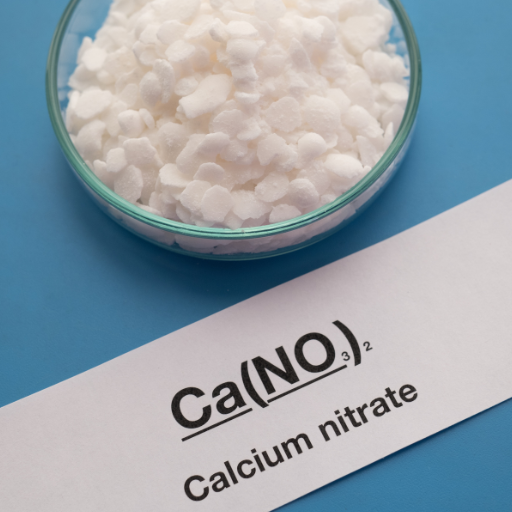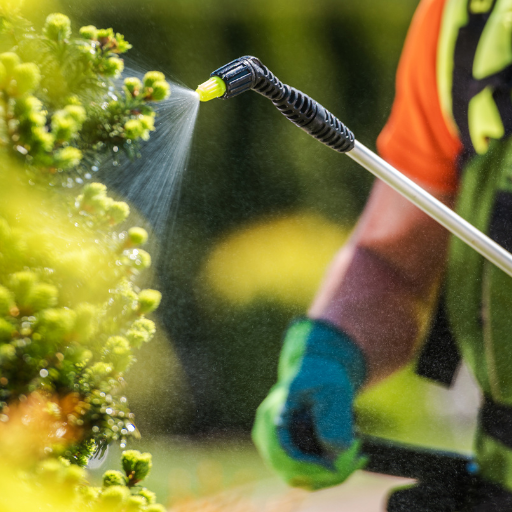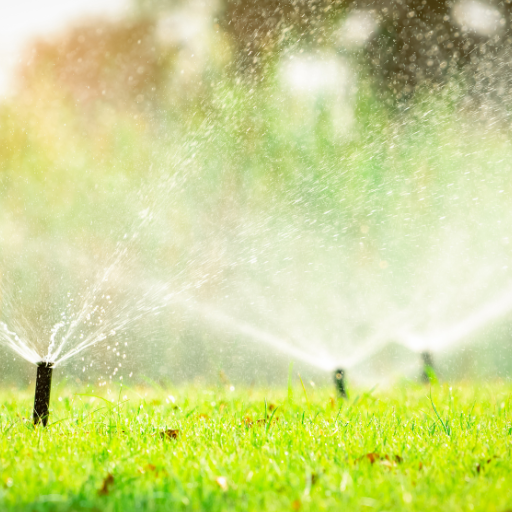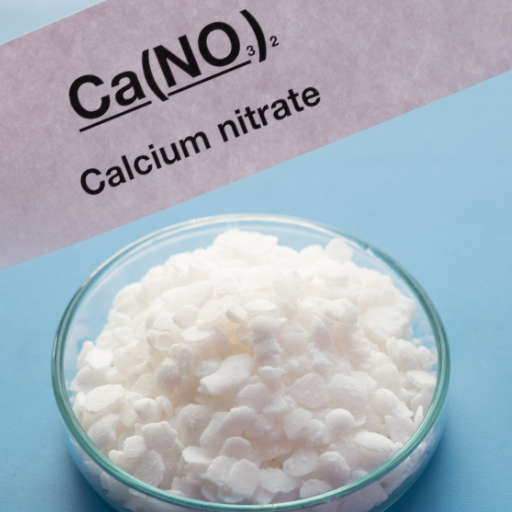Calcium nitrate fertilizer becomes an important consideration in the search for healthy shoot development and higher yields. This distinct fertilizer provides two elemental nutrients, calcium and nitrogen, crucial in plants’ lives. Calcium also strengthens cell walls, preventing diseases while increasing crops’ lifespan and quality; conversely, nitrogen produces luxuriant green foliage. The paper will look at the advantages of using calcium nitrate fertilizers and their application methods and compare them with other fertilizers. By grasping these key factors, gardeners and farmers can make intelligent choices that will enable them to improve their production techniques, thus achieving more nourished and productive plants.
What is a Calcium Nitrate fertilizer?
A dual-nutrient source for plants is calcium nitrate fertilizer. This highly soluble compound is composed of calcium nitrate [Ca(NO3)2] and serves as a dual nutrient source for the plants, providing them with both nitrogen and calcium. It contains calcium nitrate [Ca(NO3)2], which dissolves easily in water and can be readily taken up by plants. The presence of calcium helps strengthen the cell walls thereby increasing their structural integrity and thus making them less likely to suffer from diseases while the nitrogen aspect promotes robust growth through its contribution to critical growth processes such as photosynthesis. Thus, this form of fertilization is widely used in both traditional soil-based agriculture and hydroponic systems.
Decoding Calcium Nitrate Composition
The proportion of nitrogen found in calcium nitrate fertilizer is 15.5% by weight, with 14.4% available in nitrate (NO3–) form while 1.1% is ammonium (NH4+). It also contains 19% calcium by weight. This particular composition ensures an instantaneous delivery and long-lasting supply of nutrients to plants. Also, it has been established that nitrates are quickly absorbed and utilized within plants leading to rapid green-up and enhanced growth; conversely, cell walls are fortified by including 19% weight calcium ions.
For instance, soils applied with balanced feed require rates ranging from one to four pounds per one hundred square feet, or alternatively, if they are formulated into hydroponic solutions at a concentration between one hundred ppm (parts per million) and two hundred ppm (parts per million). These measures should be considered to avoid nutrient imbalances and achieve optimum plant health and productivity.
How Calcium Nitrate Fertilizer Differs from Other Fertilizers
Calcium nitrate differs from other types of fertilizers primarily because it provides both nitrogen as nitrate and calcium. Farmers commonly use these products because they deliver nitrogen in different chemical forms like urea or ammonium, but it is only with Ca(NO3)2 that the plants can receive nitrates directly without waiting for microbial conversion. Consequently, this enables them to undergo green-up faster and grow strongly. Additionally, having calcium up to 19% weight percentage increases cell wall strength and root development which is not common in other nitrogen based fertilizers.
Typical fertilizers such as urea (46-0-0) or ammonium nitrate (34-0-0) do not contain calcium which is important for root health and disease resistance. On the other hand, NPK fertilizers supplying phosphorus-potassium may have some range of application but lack the necessary balanced quantities of Ca and NO3 needed by plants present in Ca(NO3)2.
Regarding application, soil-based systems use a rate ranging from one to four pounds per one hundred square feet, while hydroponic solutions should contain between 100 ppm and 200 ppm [nitrogen]. These guidelines will ensure that plants do not outgrow their nutrient limitations while avoiding nutrient imbalances or deficiencies.
- Nitrogen Content: 15.5% (14.4% Nitrate Nitrogen [NO3–]; 1.1% Ammonium Nitrogen [NH4+])
- Calcium Content: 19%
- Soil-based Application Rate: One to Four Pounds Per One Hundred Square Feet
- Hydroponic Concentration: 100 – 200 ppm Nitrogen
Therefore, this specific composition ensures that plants are supplied with both immediately available nutrients and a continuous-release system, thus realizing healthy outputs.
Why Do Gardeners Use Calcium Nitrate?
This fertiliser offers gardeners double action benefits of calcium and nitrogen supply. The nitrate form of nitrogen absorbs almost instantly to plants, encouraging rapid growth with lush green foliage as well as added root development and strengthening cell walls with calcium component. As such, it is the best remedy for typical problems such as blossom end rot in tomatoes and peppers and bitter pit in apples. In addition, it ensures that there are good overall health of the plant hence reducing chances of diseases mainly related to insufficient availability of calcium nutrient in soil. This product has An effortless application that can be used both under hydroponic culture systems or on garden soils, making it one of the most versatile fertilizers among farmers.
Benefits of Using Calcium Nitrate Fertilizer

Gardeners prefer calcium nitrate fertilizer due to its numerous advantages. It ensures proper cell wall formation that makes plants stronger and more resistant to diseases and pests. In addition, it is highly soluble in water and readily absorbed by plants; this results into quick improvement of the health and growth of plants. Also, calcium nitrate controls problems like blossom end rot in tomatoes, bitter pit in apples, or tip burn in leafy vegetables caused by common nutrient deficiencies. Additionally, this helps them to get rid of end rot disorders and therefore boost their produce’s output as well as durability. All these factors make it a useful supplement for different gardening systems to prevent ill-health of plants.
Soil Health Improvement
For sustainable agriculture and increased yields soil health has been an important concern that requires attention. Calcium nitrate can greatly improve soil structure via calcium addition which flocculates soil particles. As a result there will be better aeration and water absorption through the soil that enables roots to grow best. With nitrate nitrogen available in the system, plants are able to access immediate nitrogen supply hence promoting their growth rates. Research indicates that application of calcium nitrate can rectify imbalances on soils preventing such problems as compaction and poor drainage.
- Optimum Application Rate: 150-200 kg/ha for field crops (soil test recommendations).
- pH Level: Works at wide pH range but at most desirable when soil pH is between 6.0-7.0.
- Calcium Content: Contains typically about 19%, which is crucial for membrane stability and strength.
- Nitrogen Content: Provides around 15.5% nitrogen required by chlorophyll production and amino acid synthesis.
Web references support these claims, indicating that this product ensures healthy soil communities and enhances nutrition later on, leading to healthier gardens with improved resistance against biotic stresses.
Preventing Blossom End Rot
Calcium deficiency usually leads to blossom-end rot affecting tomatoes, peppers and other fruiting vegetables. Maintain uniform soil moisture levels as this can hinder calcium absorption when water availability fluctuates. Mulching is a good way to achieve this. Also, check your garden soils for signs of lacking in calcium. If it is so, consider applying calcium nitrate or any other form of it available. Excessive nitrogen application can result in too much leaf growth which could aggravate the situation by worsening the deficiency of calcium rather than fruit development. Maintaining appropriate fertilization practices together with regular plant monitoring will help to minimize risks associated with blossom end rot occurrence while ensuring maximum crop productivity.
Can Calcium Nitrate Help with Specific Plant Issues?

Yes, calcium nitrate is an effective solution for specific plant issues. As stated by the top horticultural authorities, it can solve common problems like end rot of blossoms, leaf tip burn and other calcium deficiencies that result to weak cell structures and retarded growth of plants. It is crucial to use calcium nitrate consistently as it enhances nutrient absorption which is important for strong cell walls development, thus boosting diseases resistance in the plants. Besides this, it boosts nitrogen assimilation that ensures robust vegetative growth leading to improved crop yield.
Addressing Calcium Deficiencies in Plants
In plants, stunted growths coupled with feeble stems and failure to develop fruits are some of the signs of a deficiency in calcium. Technical terms should be known along their implementation correctly for efficient treatment of this issue. The most common methods include:
- Soil Testing and Amendment: Regular soil testing is vital to determine calcium levels. If deficiencies are detected, amending the soil with gypsum or lime can raise calcium levels.
- Foliar Sprays: Foliar calcium sprays are a quick remedy for acute deficiencies. They should be applied in the early morning or late afternoon to minimize evaporation and ensure better absorption.
- Calcium Chelates: Using calcium chelates can improve calcium availability to plants, particularly in soils with pH imbalances that hinder uptake. Products like calcium EDTA are often recommended.
- Consistent Watering: Irregular watering can aggravate calcium deficiencies, especially in fruits like tomatoes and peppers. Maintaining consistent soil moisture helps roots efficiently uptake calcium.
- Use of Calcium Nitrate: As previously mentioned, calcium nitrate can be used to supply both calcium and nitrogen, aiding in comprehensive nutrient management.
By integrating these strategies, plants can achieve improved growth, enhanced disease resistance, and higher overall productivity.
Why Calcium Nitrate is Effective Against Blossom End Rot
Blossom end rot is a common issue in fruits such as tomatoes, peppers and eggplants mainly due to calcium deficiency. Calcium nitrate works well for treating this problem because it provides the plant with both nitrogen and calcium.
The occurrence of blossom end rot can be reduced by increasing the cell wall stability through use of calcium since cell wall formation requires calcium. Moreover, calcium nitrate is water soluble enabling quick uptake by plants thus facilitating calcium being taken up more efficiently by the fruits. Furthermore, roots respond positively to nitrates as it enhances their growth ability therefore leading to healthier plants which take up more calcium.
- Application Dosage: Typical foliar sprays use 1-1.5 grams per liter of water, while soil applications may require around 5-10 grams per plant, depending on the plant size and soil conditions.
- Timing: Applications are most effective when started early in the growing season and continued at regular intervals, particularly during periods of rapid fruit growth.
- pH Level: Calcium nitrate is effective within a pH range of 6.0 to 6.5. Soil pH outside this range can hinder calcium availability and absorption.
- Water Management: Consistent and adequate watering is necessary to prevent additional stress on the plant, which can exacerbate calcium deficiencies.
Through these mechanisms, calcium nitrate ensures that plants receive the calcium they need to develop healthy, rot-free fruits, thereby enhancing yield and quality.
Suitable Crop Types for Calcium Nitrate Fertilizer Use
Agriculturalists find calcium nitrate fertilizer useful for several crops like tomatoes, peppers, apples and greens. Blossom end rot in the case of tomatoes and peppers, bitter pit for apples and marginal leaf burn in leafy greens are some disorders that arise when these plants lack calcium elements. This problem can be solved by application of calcium nitrate which provides readily available nitrogen and calcium that makes plants healthier and more productive.
Tomatoes and Peppers:
- Application Dosage: Foliar spray of 1-1.5 grams per liter of water. Soil application dosage varies from 5-10 grams per plant.
- Timing: Start early in the growing season and continue at regular intervals, particularly during flowering and fruiting stages.
- Technical Parameters: Maintain soil pH between 6.0 and 6.5 for optimal calcium absorption.
Apples:
- Application Dosage: 10 grams per liter for foliar sprays.
- Timing: Apply post-bloom and continue at 10- to 14-day intervals until fruit maturation.
- Technical Parameters: Consistent application ensures healthy fruit development and prevents bitter pit.
Leafy Greens:
- Application Dosage: 1-2 grams per liter for foliar sprays. Soil applications depend on crop density and soil conditions.
- Timing: Regular applications throughout the growing cycle.
- Technical Parameters: Ensure sufficient watering to facilitate nutrient uptake and avoid leaf burning.
These technical guidelines enable efficient use of calcium nitrate fertilizer to mitigate calcium deficiency-related problems, leading to healthier, higher-quality crops.
Application Methods for Calcium Nitrate

To ensure optimal delivery and absorption of nutrients across different crops, calcium nitrate can be applied through various methods such as:
- Foliar Spraying: This means dissolving calcium nitrate in water and spraying it directly on the leaves of the plants. Foliar spraying enhances the quick absorption of calcium and nitrogen, so it is best during critical growth periods like flowering and fruiting. Spray application should be done very early in the morning or late afternoon to reduce evaporation losses and scorching.
- Soil Application: Another way is to introduce Ca(NO3)2 into the soil, which leads to increased fertility and aeration. As granules or dissolved in water for uniformity throughout the field, it may be done in preparation before planting or at early vegetative stages to enhance root development. To avoid over-application and achieve balanced nutrient levels, periodic soil tests should be conducted.
- Irrigation Systems: Calcium nitrate can also be efficiently delivered using fertigation techniques through drip or sprinkler irrigation systems. This allows for targeting the root zone, reducing the loss of nutrients through leaching while minimizing water use at the farm level. Therefore, it provides excellent conditions for optimum availability of nutrients within all growing seasons, hence boosting plant growth and increasing yields. In order to have equal fertilizer distribution throughout all over crop fields therefore calibration of the irrigation system is essential.
How to Apply Calcium Nitrate via Foliar Spray?
To apply calcium nitrate via foliar spray effectively, follow these steps:
- Dissolution: Dissolve calcium nitrate in water at 1-2% (10-20 grams per liter of water). Ensure the solution is thoroughly mixed to prevent clogging in the sprayer.
- Timing: Apply the foliar spray early in the morning or late afternoon to reduce the risk of evaporation and leaf burn. This helps the plant to absorb nutrients more efficiently.
- Spray Coverage: Use a fine mist to ensure an even distribution of the solution over the entire leaf surface, focusing on both the upper and lower sides of the leaves. Uniform coverage is crucial for optimal absorption.
- Frequency: Depending on the crop’s needs and growth stage, apply the foliar spray every 7-14 days. Critical periods such as flowering and fruiting may require more frequent applications.
- Equipment: Utilize a sprayer designed for a foliar application that can produce a fine mist. Calibrate the sprayer regularly to ensure accurate application rates and avoid over-application.
Technical Parameters:
- Solution Concentration: 1-2% (10-20 grams per liter of water)
- Application Frequency: Every 7-14 days
- Optimal Timing: Early morning or late afternoon
- Spray Coverage: Even distribution on both sides of leaves
Adhering to these guidelines and parameters can maximize the benefits of calcium nitrate foliar sprays, promoting healthier and more productive crops.
Side Dressing with Calcium Nitrate
In order to provide a continuous nutrient supply throughout the growing season, calcium nitrate is side-dressed by applying it along the sides of the crop’s row or around individual plants. For instance, this way works best for crops like tomatoes, peppers and leafy greens that require high levels of both nitrogen and calcium. In order to perform an effective side dressing, the following steps should be adhered to:
- Application Timing: Apply calcium nitrate about three to four weeks after planting when plants are well-established and beginning to develop rapidly. Subsequent applications can be made every four to six weeks depending on crop requirements.
- Placement: Spread the calcium nitrate along the sides of the rows or around the base of the plant, avoiding direct contact with the plant stems and leaves to prevent burning.
- Dosage: Use about 1 to 2 pounds of calcium nitrate per 100 feet of row or per 100 square feet of garden area. Adjust the amount based on soil test results and specific crop needs.
- Incorporation: Lightly work the fertilizer into the soil using a hoe or rake to ensure it is accessible to the plant roots and to minimize losses due to volatilization. After application, water the area thoroughly to help dissolve the fertilizer and carry it into the root zone.
By following these guidelines, you can efficiently provide essential nutrients to your crops, leading to improved growth, yield, and quality.
Using Calcium Nitrate in Irrigation Systems
Integrating calcium nitrate into irrigation systems efficiently delivers essential nutrients directly to the plant root zone. This practice aids in maintaining consistent nutrient availability and can be particularly useful in large-scale farming operations. To use calcium nitrate effectively in irrigation systems, consider the following technical parameters:
- Solubility: Calcium nitrate is highly soluble in water, allowing it to be easily dissolved and mixed within irrigation systems. For optimal dissolution, use a concentration of about 1 to 2 ounces of calcium nitrate per gallon of water (approximately 7 to 15 grams per liter).
- pH Compatibility: Calcium nitrate typically has a neutral to slightly alkaline pH. Ensure that the pH of your irrigation water remains within the range of 5.5 to 7.0 to prevent nutrient lockout and support optimal plant growth.
- Injection Rates: For drip irrigation systems, inject calcium nitrate at a rate of 10 to 20 pounds per acre per week, adjusting based on crop requirements and soil fertility levels. For sprinkler systems, similar rates can be used, but always monitor and adjust based on specific crop needs.
- Compatibility with Other Fertilizers: While calcium nitrate can be combined with many fertilizers, avoid mixing it with phosphates or sulfates in concentrated solutions as precipitation may occur, which can clog irrigation lines.
Check and maintain your irrigation equipment regularly to prevent clogging and ensure efficient nutrient delivery. By adhering to these guidelines, you can optimize the use of calcium nitrate in conjunction with your irrigation system, promoting healthier and more productive crops.
Expert Gardening Tips for Using Calcium Nitrate

When you use calcium nitrate in your garden, it is necessary to have a soil test that will show the levels of nutrients so as to know the exact amount of calcium nitrate required. Calcium nitrate should be completely dissolved before application to avoid clogging the irrigation systems. This solution should be applied directly to the soil around the base of plants while avoiding foliage as it reduces leaf burn risk. It is better if you apply calcium nitrate during active growth periods; this is usually at early stages of vegetable production and flowering plants. Additionally, think about use of calcium nitrate or any other practices for nutrient management such as organic composting and crop rotation that can assure balanced soil condition. Regular monitoring combined with adjustments based on plant response will ensure robust plant growth and high yields because calcium nitrate helps in doing so.
Best Practices for Application
- Dissolve Thoroughly: Always ensure calcium nitrate is fully dissolved before application. This avoids clogging irrigation systems and helps plants absorb nutrients efficiently.
- Correct Timing: Apply calcium nitrate during the early morning or late afternoon to reduce potential leaf burn and optimize nutrient uptake.
- Consistent Application: Regularly apply calcium nitrate according to your plant’s growth stage, particularly during periods of active growth.
- Avoid Foliage: To prevent leaf burn, apply the solution directly to the soil at the base of the plants rather than spraying it on the leaves.
- Proper Dosage: Follow recommended dosage guidelines based on your soil test results to avoid over-fertilization, which can harm plant growth.
Seasonal Considerations
The application of calcium nitrate is important as plants enter the active growth phase in the spring to ensure they get the necessary nutrients for vigor. The soil temperature should be maintained above 50°F (10°C) all through to guarantee proper nutrient uptake. In summer, applications should be made early morning or late afternoon to avoid leaf burn due to high temperatures and direct sunlight.
Some adjustments may be needed depending on which crop one is dealing with as autumn gets closer. For these that are winding up their season, apply less of it so that you don’t end up putting additional nutrients into your soils unnecessarily; in contrast, keep applying it regularly for cool-season crops. During winter and especially where soils freeze, do not apply calcium nitrate because plant uptake is at its minimum with potential nutrient loss.
Seasonal technical directives:
- Spring: Apply 10-15 lbs per acre every 4-6 weeks.
- Summer: Apply 8-12 lbs per acre every 4-6 weeks, focusing on cooler times of the day.
- Autumn: Apply 5-10 lbs per acre for cool-season crops; reduce for others.
- Winter: Suspend application entirely.
These seasonal considerations help maximize the efficiency of calcium nitrate as a fertilizer, ensuring plants receive the nutrients they need at the right time for optimal growth and yield.
Common Questions About Calcium Nitrate Fertilizer

Calcium nitrate is a versatile fertilizer that addresses various plant nutrition needs, particularly in preventing calcium deficiencies that can cause blossom end rot in tomatoes and other crops. It also provides nitrogen in a form that plants can readily absorb, promoting vigorous leafy growth. However, it’s important to apply it correctly to avoid potential issues such as leaf burn, which can result from applying fertilizer during the hottest parts of the day. Regular but moderate applications tailored to your plants’ specific growth stages and seasonal needs can help achieve balanced and healthy plant growth.
Is Calcium Nitrate Safe for All Plants?
Calcium nitrate is generally safe for a wide variety of plants, although certain considerations should be made. It’s particularly effective for plants with high calcium requirements, like tomatoes, peppers, and brassicas, and crops grown in calcium-deficient soils. However, over-application or improper timing can cause issues such as leaf burn, especially under high temperatures.
- Application Rate: Generally, apply 1 to 2 teaspoons per plant or 200 to 400 lbs per acre, depending on the plant’s calcium needs.
- Soil Type: Calcium nitrate is highly recommended for sandy or acidic soils due to its neutralizing properties.
- Timing: Apply during the early morning or late afternoon to minimize leaf burn risks.
- Watering: Ensure thorough watering after application to help dissolve and distribute the nutrients.
While calcium nitrate suits many plants, avoid using it on species that prefer acidic conditions, like blueberries and azaleas, as the calcium content could raise soil pH to unfavorable levels. Always conduct a soil test to tailor the application rate and frequency to your specific needs.
How Often Should Calcium Nitrate Be Applied?
The frequency of calcium nitrate application largely depends on the type of plant, soil condition, and growth stage. For most garden plants, applying calcium nitrate every four to six weeks during the growing season is sufficient. Here are some guidelines based on the top sources:
- Tomatoes and Peppers: Apply every two to four weeks after the plants have set fruit to prevent blossom end rot.
- Leafy Greens: A bi-weekly application can promote vigorous leaf growth.
- Root Crops: Apply once at planting and again mid-season to ensure robust root development.
Technical parameters:
- Application Rate: 1 to 2 teaspoons per plant or 200 to 400 lbs per acre, tailored to crop needs.
- Watering Needs: Ensure adequate irrigation post-application for nutrient absorption.
- Soil Testing: Regular soil testing is recommended, and the frequency and quantity should be adjusted based on soil calcium levels and pH.
These guidelines help optimize plant health while preventing over-application, which could lead to nutrient imbalances or environmental issues.
Understanding Soil Requirements for Effective Use of Calcium Nitrate
To be effective with calcium nitrate, your garden or farm soil will have to meet specific requirements. Some of the key elements include; soil ph, texture and existing nutrient levels. This article takes you through insights from different sources;
- Soil pH: Calcium Nitrate is most effective in slightly acidic and neutral soils (pH 6.0 to 7.0). Regular soil tests are performed to maintain an optimum pH level, which allows nutrients to be available and prevents deficiencies.
- Soil Texture: Sandy soils often require frequent applications as nutrients leach away quicker than clayey soils do whereas clayey soils retain nutrients longer necessitating less frequent but uniform applications.
- Nutrient Levels: Soil tests should be done to determine the amounts of available calcium and nitrate because applying too much may affect nutrient balance thus restricting plant growth or cause harm to the environment.
Technical Parameters:
- pH: Maintain your soil at a pH range of 6.0-7.0
- Application Rate: Adjusted based on soil texture-sandy soils may require higher rates while clayey soils may need lower rates
- Timing: More frequently application on sandy soils every four to six weeks and then less frequently for clayey ones every six to eight weeks
- Watering: For proper irrigation after application to enhance nutrient uptake and prevent salt build up.
By following these rules, planting can grow healthy and give good yields. Regular testing plus monitoring is essential for sustainable + effective nutrient management practices for farmers.
Reference sources
- Source: Gardening Know How – Online Article
- Summary: This source explains calcium nitrate fertilizer’s role in providing calcium and nitrogen to plants. It discusses the application methods, emphasizing its faster plant uptake when applied as a dissolved solution. The article is beneficial for gardeners seeking quick and effective plant nutrition solutions.
- Link: Gardening Know How – Calcium Nitrate Fertilizer
- Source: Yara United States – Manufacturer Website
- Summary: This source details YaraLiva calcium nitrates, highlighting their fast-acting nitrate-N and calcium content, which promotes prolonged growth and plant strength. The information provided is valuable for those interested in understanding the benefits and applications of calcium nitrate fertilizers from a reputable manufacturer.
- Link: Yara United States – Calcium Nitrate Fertilizers
- Source: Total Connection – Informative Blog Post
- Summary: This blog post delves into the types, functions, and benefits of calcium nitrate fertilizers, elaborating on their water solubility and dual nutrient provision of calcium and nitrogen. It serves as a comprehensive guide for individuals looking to grasp the significance of calcium nitrate fertilizers in plant nutrition.
- Link: Total Connection – Calcium Nitrate Fertilizer Overview
Frequently Asked Questions (FAQs)
Q: What is a Calcium Nitrate fertilizer?
A: Calcium nitrate fertilizer is a water-soluble fertilizer that provides plants with both calcium and nitrogen, essential nutrients for healthy growth and development.
Q: How does calcium nitrate benefit plants?
A: Calcium nitrate provides two key nutrients: calcium, which strengthens cell walls, and nitrate nitrogen, which promotes fast-acting growth. This combination improves nutrient uptake and overall plant health.
Q: How should I use calcium nitrate in the garden?
A: To use calcium nitrate in the garden, dissolve 1 cup of the fertilizer in 1 gallon of water and apply it to the soil around the base of each plant. This method ensures the nutrients are available for uptake by the roots.
Q: How often should I apply calcium nitrate to my tomato plants?
A: Calcium nitrate should be applied per plant every 1-2 weeks during the growing season to ensure optimal calcium and nitrogen levels for your tomatoes.
Q: Can calcium nitrate be used for foliar feeding?
A: Yes, calcium nitrate can be used as a foliar spray. Dissolve 1 cup per 50 gallons of water and mist the foliage to provide a direct source of nutrients.
Q: What are the signs of calcium deficiency in plants?
A: Symptoms of calcium deficiency include blossom end rot in tomatoes and peppers, poor root development, and weak stems. Regular application of soluble calcium nitrate fertilizer can prevent these issues.
Q: Is calcium nitrate suitable for all types of plants?
A: Calcium nitrate is beneficial for a variety of plants, including tomatoes, peppers, and apples. Always follow specific guidelines for the particular species you are growing.
Q: How should I store calcium nitrate fertilizer?
A: Store calcium nitrate fertilizer in a cool, dry place away from direct sunlight and moisture to maintain its effectiveness. Proper storage prevents it from clumping and ensures it remains water-soluble.
Q: Why is nitrogen in calcium nitrate important for plants?
A: Nitrogen is a crucial nutrient that promotes vigorous growth and green foliage. In calcium nitrate, the nitrogen is in the form of nitrate nitrogen, which is readily available for plant uptake, making it highly efficient.
Q: Can I use calcium nitrate alongside other fertilizers?
A: Yes, you can use calcium nitrate alongside other fertilizers. However, avoid mixing it with sulfate or phosphate fertilizers, as they can form insoluble salts that reduce nutrient availability.






